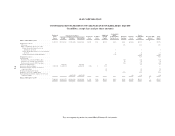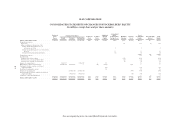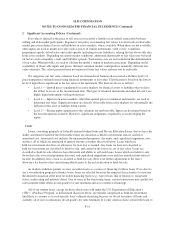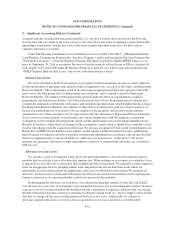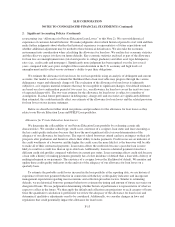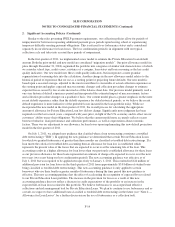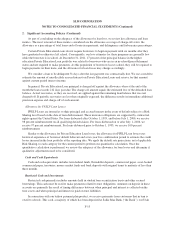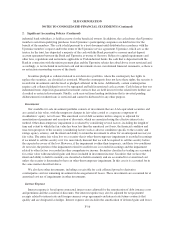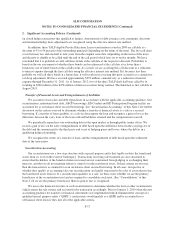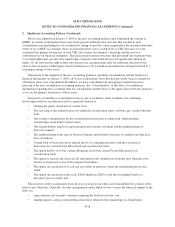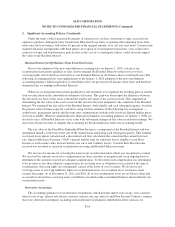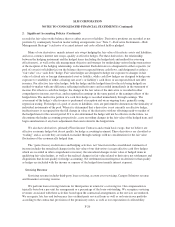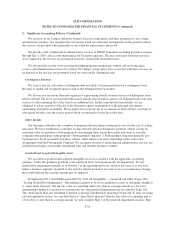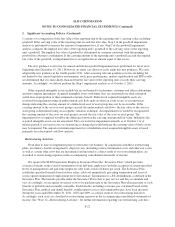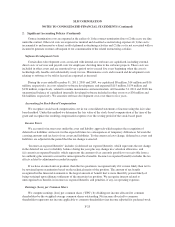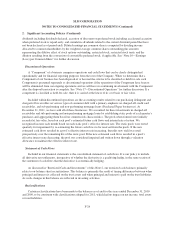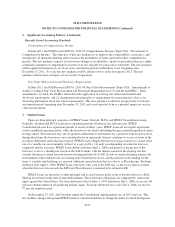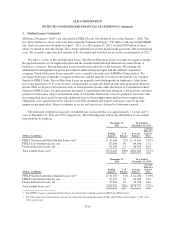Sallie Mae 2011 Annual Report Download - page 125
Download and view the complete annual report
Please find page 125 of the 2011 Sallie Mae annual report below. You can navigate through the pages in the report by either clicking on the pages listed below, or by using the keyword search tool below to find specific information within the annual report.SLM CORPORATION
NOTES TO CONSOLIDATED FINANCIAL STATEMENTS (Continued)
2. Significant Accounting Policies (Continued)
industrial bank subsidiary, is held in escrow for the beneficial owners. In addition, the cash rebates that Upromise
members earn from qualifying purchases from Upromise’s participating companies are held in trust for the
benefit of the members. This cash is held pursuant to a trust document until distributed in accordance with the
Upromise member’s request and/or the terms of the Upromise service agreement. Upromise, which acts as the
trustee for the trust, has deposited a majority of the cash with the Bank pursuant to a money market deposit
account agreement between the Bank and Upromise as trustee of the trust. Subject to capital requirements and
other laws, regulations and restrictions applicable to Utah industrial banks, the cash that is deposited with the
Bank in connection with the tuition payment plan and the Upromise rebates described above is not restricted and,
accordingly, is not included in restricted cash and investments in our consolidated financial statements, as there is
no restriction surrounding our use of the funds.
Securities pledged as collateral related to our derivative portfolio, where the counterparty has rights to
replace the securities, are classified as restricted. When the counterparty does not have these rights, the security is
recorded in investments and disclosed as pledged collateral in the notes. Additionally, certain counterparties
require cash collateral pledged to us to be segregated and held in restricted cash accounts. Cash balances that our
indentured trusts deposit in guaranteed investment contracts that are held in trust for the related note holders are
classified as restricted investments. Finally, cash received from lending institutions that is invested pending
disbursement for student loans is restricted and cannot be disbursed for any other purpose.
Investments
Our available-for-sale investment portfolio consists of investments that are AAA equivalent securities and
are carried at fair value, with the temporary changes in fair value carried as a separate component of
stockholders’ equity, net of taxes. The amortized cost of debt securities in this category is adjusted for
amortization of premiums and accretion of discounts, which are amortized using the effective interest rate
method. Other-than-temporary impairment is evaluated by considering several factors, including the length of
time and extent to which the fair value has been less than the amortized cost basis, the financial condition and
near-term prospects of the security (considering factors such as adverse conditions specific to the security and
ratings agency actions), and the intent and ability to retain the investment to allow for an anticipated recovery in
fair value. The entire fair value loss on a security that is other-than-temporary impairment is recorded in earnings
if we intend to sell the security or if it is more likely than not that we will be required to sell the security before
the expected recovery of the loss. However, if the impairment is other-than-temporary, and those two conditions
do not exist, the portion of the impairment related to credit losses is recorded in earnings and the impairment
related to other factors is recorded in other comprehensive income. Securities classified as trading are accounted
for at fair value with unrealized gains and losses included in investment income. Securities that we have the
intent and ability to hold to maturity are classified as held-to-maturity and are accounted for at amortized cost
unless the security is determined to have an other-than-temporary impairment. In this case it is accounted for in
the same manner described above.
We also have other investments, including a receivable for cash collateral posted to derivative
counterparties and our remaining investment in leveraged aircraft leases. These investments are accounted for at
amortized cost net of impairments in other investments.
Interest Expense
Interest expense is based upon contractual interest rates adjusted for the amortization of debt issuance costs
and premiums and the accretion of discounts. Our interest expense may also be adjusted for net payments/
receipts related to interest rate and foreign currency swap agreements and interest rate futures contracts that
qualify and are designated as hedges. Interest expense also includes the amortization of deferred gains and losses
F-16


